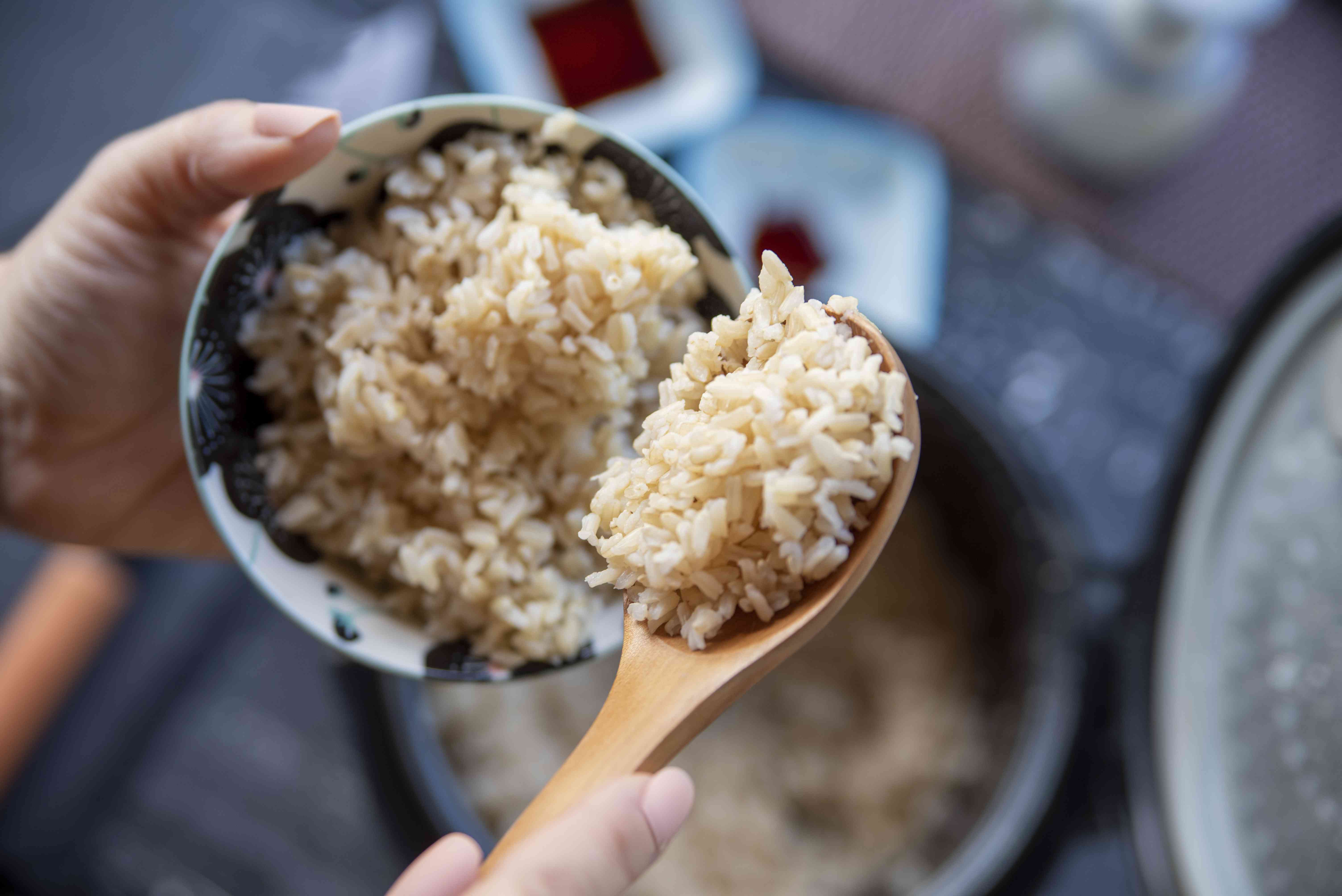Leftover Rice Can Cause Food Poisoning—Here’s How to Stay Safe, According to Experts

Rice can harbor the bacteria Bacillus cereus, which can grow and cause illness if the rice isn't stored properly
- Viral videos on TikTok have sparked an important conversation about the risks of food poisoning from leftover rice.
- Despite some misconceptions, experts recommend that all cooked grains should be refrigerated to prevent Bacillus cereus from growing.
- Leftover rice should be refrigerated no more than two hours after cooking, and is good for about four days in the fridge, experts said.

eleonora galli/Getty Images
Most people know that they should avoid eating raw chicken, unrefrigerated mayonnaise, and even unwashed produce to prevent food poisoning. But even a cooked grain such as rice can cause gastrointestinal issues, and people online are sharing their stories to warn others.
On TikTok, videos that show people falling ill after eating leftover rice are making the rounds. These cautionary tales may be leaving people wondering if eating it is really that risky, or if it’s simply another TikTok health rumor.
One might assume that leaving cooked rice out on the counter is no different than leaving out a loaf of baked bread, but nutrition experts say that that’s actually not the case.
“Bacterial spores are heat resistant, so they survive even after [the] rice is cooked and reheated,” Nancy Mitchell, RN, geriatric nursing care expert, told Health. “The problem is that leaving the rice out for too long at room temperature can encourage the spores to develop into bacteria.”
Here’s what experts had to say about why people can get sick from eating leftover rice, and the tips you need to know to avoid getting sick.
Is Leftover Rice Linked to Food Poisoning?
Food poisoning is an illness that occurs after a person eats food or drinks water that has been contaminated with certain potentially harmful bacteria, parasites, viruses, or toxins. It’s also quite common—each year, about 48 million people in the United States have food poisoning.
As the body rids itself of the foreign item, infected people can experience vomiting, diarrhea, fever, and stomach cramps.
Most cases of food poisoning resolve on their own within a week. But exposure to these harmful items can be particularly risky for people who are immunocompromised, pregnant, or under the age of five. Their bodies may not be equipped to combat these unwelcome organisms appropriately. In more extreme cases, food poisoning can even cause death—it has been linked to about 3,000 deaths in the United States each year.
Because of this, it’s important to take the appropriate steps to avoid food poisoning so that people can reduce their risk of becoming ill.
Rice may seem like a low-risk food to consume. But even though cooked rice is a single-grain dish that doesn’t include anything raw, it can still harbor certain bacteria that may make a person fall ill if it’s not stored and reheated properly.
“Cooked rice has a history of containing the bacteria called Bacillus cereus,” Toby Amidor, MS, RD, CDN, FAND, an award-winning nutrition expert, food safety expert, and author of the upcoming book, Up Your Veggies: Flexitarian Recipes for the Whole Family, told Health.
The bacteria is found in the soil and produces a toxin that causes gastrointestinal illnesses when it’s ingested.
“Bacillus cereus is one of the most common causes of foodborne illness, with over [63,000] cases annually in the US,” Melissa Azzaro, RDN, LD, registered dietitian and podcast host at Hormonally Yours, told Health.
“It’s so common that the vomiting and diarrhea that can occur 1-5 hours after eating leftover rice that hasn’t been properly stored has been called ‘fried rice syndrome.’” Bacillus cereus infection is typically mild, but it can be dangerous, especially in those who have a weakened immune system.
This risk doesn’t just apply to rice, Azzaro added. Any grain can harbor bacteria if it is not stored correctly, and can make a person very ill if it is not stored and reheated properly.
How to Properly Store Leftover Rice
Eating rice that is cooked and properly heated comes with very little risk. But, if the rice has remained in “temperatures between 40 degrees to 140 degrees Fahrenheit (called the temperature danger zone) for over two hours, bacteria can grow very quickly,” Amidor said.
That means that cooked rice should not be left at room temperature for more than two hours, and no more than one hour if the temperature is over 90 degrees Fahrenheit, Amidor explained.
Once it is no longer hot, the rice “should then be placed in a covered container in the refrigerator,” she added.
And after the leftover rice is cooled and stored in a refrigerator kept below 40 degrees Fahrenheit, it’s good for up to four days in the fridge, said Amidor.
“Cooked rice can also be frozen in a freezer-safe container or resealable bag for up to three to four months,” she said.
Once people are ready to enjoy their leftover rice, Azzaro explained that rice can be reheated only once. She recommends portioning a serving to reheat instead of heating the entire leftover batch to avoid the reheating-storing-reheating pattern.
All leftovers—regardless of whether it is rice, pasta, or your mom’s potato casserole—should be reheated to an internal temperature of 165 degrees Fahrenheit to help ensure its safety.
When considering the safety of eating leftover rice, the risk is linked only to improper storage practices. Rice provides many important nutrients to keep people energized and well-nourished, so enjoying rice and eating it for leftovers the next day is a healthy and safe option—so long as it’s being stored and reheated correctly.
This story originally appeared on: Health News - Author:Lauren Manaker MS, RDN, LD


















